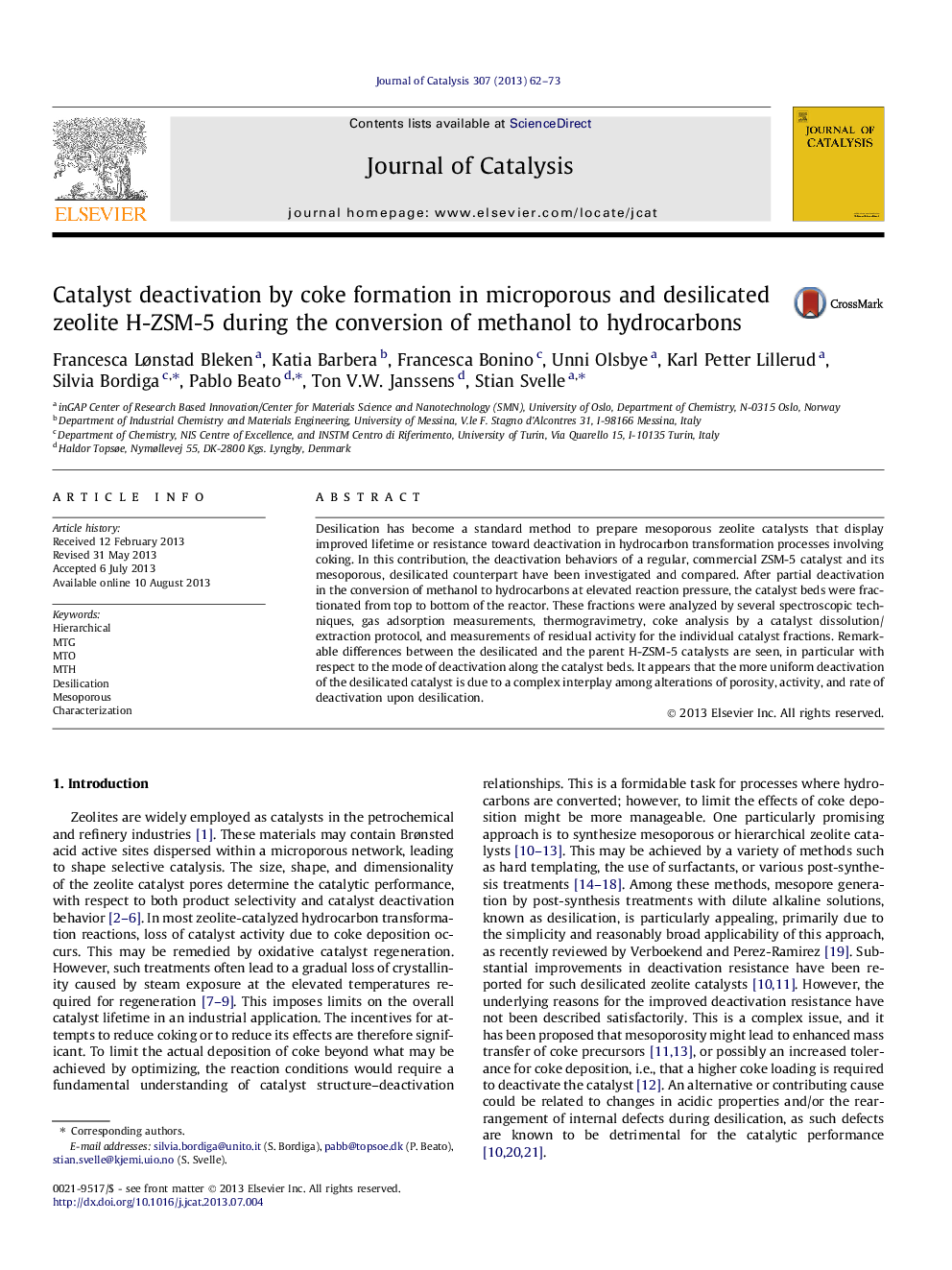| کد مقاله | کد نشریه | سال انتشار | مقاله انگلیسی | نسخه تمام متن |
|---|---|---|---|---|
| 61147 | 47567 | 2013 | 12 صفحه PDF | دانلود رایگان |

• Deactivation of desilicated and regular ZSM-5 catalysts in the MTH reaction is compared.
• The catalyst beds were fractionized and analyzed using several techniques.
• A more uniform deactivation along the catalyst bed is seen for the desilicated catalyst.
• Both porosity and activity are influenced by desilication and influence deactivation.
Desilication has become a standard method to prepare mesoporous zeolite catalysts that display improved lifetime or resistance toward deactivation in hydrocarbon transformation processes involving coking. In this contribution, the deactivation behaviors of a regular, commercial ZSM-5 catalyst and its mesoporous, desilicated counterpart have been investigated and compared. After partial deactivation in the conversion of methanol to hydrocarbons at elevated reaction pressure, the catalyst beds were fractionated from top to bottom of the reactor. These fractions were analyzed by several spectroscopic techniques, gas adsorption measurements, thermogravimetry, coke analysis by a catalyst dissolution/extraction protocol, and measurements of residual activity for the individual catalyst fractions. Remarkable differences between the desilicated and the parent H-ZSM-5 catalysts are seen, in particular with respect to the mode of deactivation along the catalyst beds. It appears that the more uniform deactivation of the desilicated catalyst is due to a complex interplay among alterations of porosity, activity, and rate of deactivation upon desilication.
The deactivation behaviors of a regular, commercial ZSM-5 catalyst and its mesoporous, desilicated counterpart have been investigated and compared by fractionating partially deactivated catalyst beds and submitting these fractions to extensive analysis. Remarkable differences between the two catalysts are seen, in particular with respect to the mode of deactivation along the catalyst beds.Figure optionsDownload high-quality image (65 K)Download as PowerPoint slide
Journal: Journal of Catalysis - Volume 307, November 2013, Pages 62–73